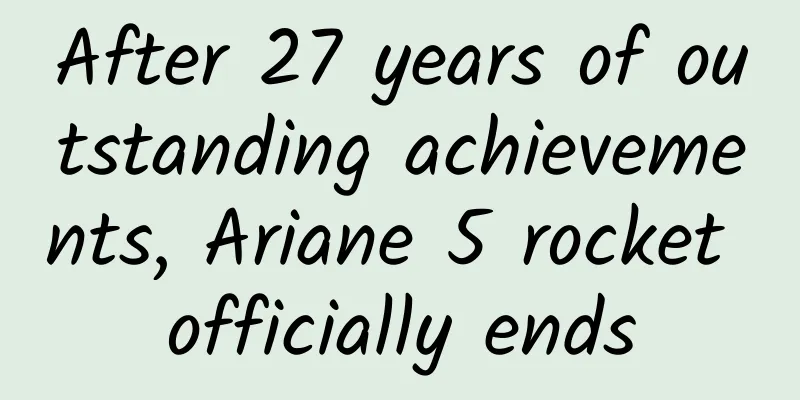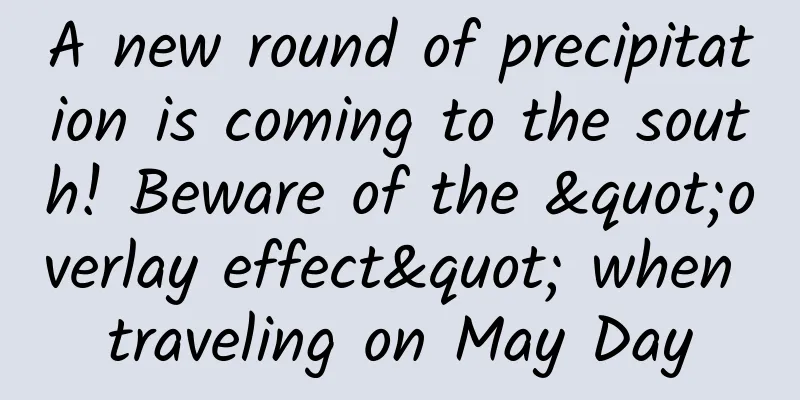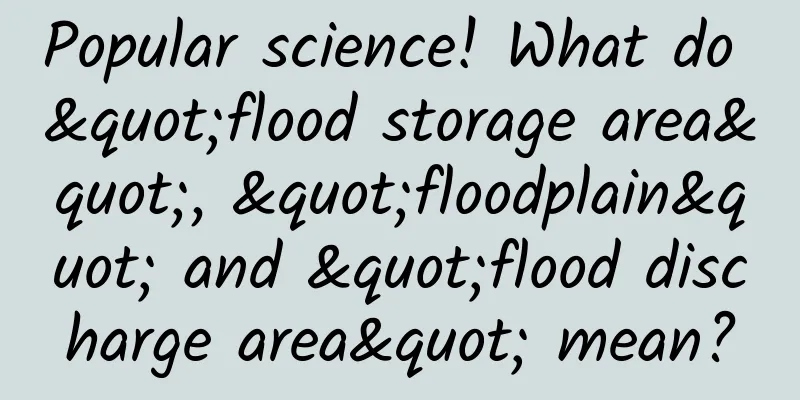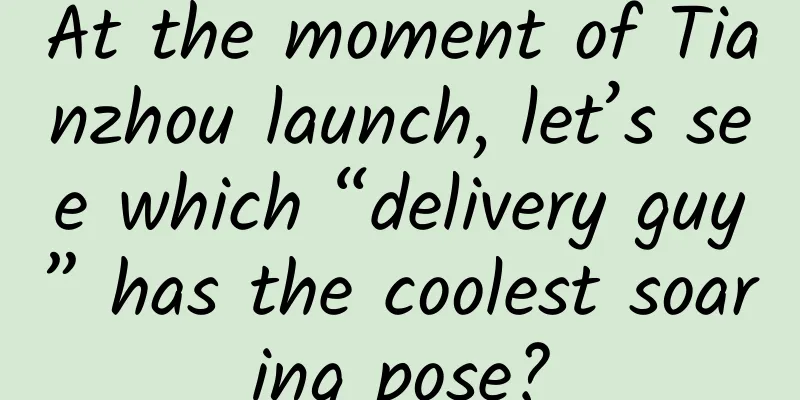After 27 years of outstanding achievements, Ariane 5 rocket officially ends

|
In the early morning of July 6, Beijing time, Europe's prestigious Ariane 5 rocket carried out its 117th and final launch, successfully sending two communications satellites into orbit. When a rocket that has been in service for 27 years is retired, how should it be "put to rest"? The teacher is famous and concise and reliable The Ariane 5 rocket belongs to the famous Ariane family of launch vehicles, developed by the European Space Agency. Prior to the Ariane 5 rocket, the European Space Agency developed four models, Ariane 1 to 4, in the 1970s and 1980s to meet Europe's needs for independent satellite launches. Since Soviet rockets did not enter the commercial launch market at that time, and the United States retired its expendable rockets but had an accident with its space shuttle, the mature and reliable Ariane 4 rocket took advantage of the opportunity to fill the gap in launch capabilities and achieved unprecedented success in the international commercial launch market. In response to the trend of large-scale communication satellites in the commercial launch market and the demand for the development and utilization of low-Earth orbit, ESA formally approved the development of the Ariane 5 rocket at the ministerial meeting in November 1987. The initial goal of the Ariane 5 rocket was to launch various satellites into geosynchronous transfer orbit and sun-synchronous orbit, and to launch large modules of the space station, the Columbus free-flying platform and the Hermes space shuttle to support the operation of the space station into low-Earth orbit. In order to meet the needs of launching single or double satellites weighing 6.8 tons, especially the requirements of launching the 21-ton Hermes space shuttle, the Ariane 5 rocket did not use the diameter and engine plan of the Ariane 4 rocket, but adopted a new plan of large-diameter rocket body structure, high-thrust engine, and fewer stages. The 5.4-meter core diameter of the Ariane 5 rocket is about 1.5 times the 3.8-meter diameter of the Ariane 4 rocket, which lays the foundation for the realization of large capacity. The first stage of the rocket uses a newly developed high-performance Vulcan hydrogen-oxygen engine with a thrust of 90 tons; it is bundled with two large solid boosters, with a single thrust of up to 455 tons. Based on the high-thrust engine, the Ariane 5 rocket only needs three engines to take off, while the Ariane 4 rocket requires 6 or 8 engines. At the same time, compared with the three-and-a-half-stage Ariane 4 rocket, the two-and-a-half-stage Ariane 5 rocket can have one less separation link during flight. The above design scheme is conducive to improving the reliability of the rocket. After successfully developing the basic model, in order to improve the carrying capacity and ensure that the Ariane 5 rocket dominates the commercial launch market, ESA has developed improved models such as Ariane 5G+, Ariane 5GS, and Ariane 5ECA through a series of measures. In response to the launch needs of the automatic transfer vehicle that provides logistics services to the International Space Station, ESA has improved and developed the Ariane 5ES model. From Ariane 5G to Ariane 5ECA, the rocket's takeoff weight increased from 737 tons to 777 tons, the low-Earth orbit capacity jumped from 16 tons to 21 tons, and the geosynchronous transfer orbit capacity increased from 6.95 tons to 10.5 tons. Based on five models, the Ariane 5 rocket has carried out a total of 117 launch missions during its 27 years of service, with 112 successful launches and a launch success rate of 95.7%. It is a mature and reliable rocket that has left a significant mark in the history of world rocket development. A tortuous beginning leads to brilliant success The performance and technical level of the Ariane 5 rocket have made a leap forward compared to the previous generation of Ariane rockets. However, compared with the Ariane 4 rocket, which had a smooth development, the launch road of the Ariane 5 rocket has been full of twists and turns. In June 1996, the Ariane 5 rocket had its first launch, but unfortunately it got off to a bad start. An error in the guidance and control software code caused the rocket to lose control and self-destruct and explode just 37 seconds after launch. After a comprehensive investigation, the Ariane 5 rocket conducted a second launch in October 1997, but unfortunately it was still not completely successful. The cause of the failure was an abnormality in the Vulcan engine that caused it to shut down prematurely, and the satellite failed to enter the planned orbit. On October 21, 1998, the third launch of the Ariane 5 rocket was finally a complete success. The rocket then began to undertake commercial launch missions, but its misfortune did not end there. In July 2001, the Ariane 5 rocket had an abnormal operation in the second stage of the launch of a dual-satellite mission, and the satellites failed to enter the planned orbit. On December 11, 2002, the Ariane 5ECA rocket failed in its first flight. The failure of the first stage Vulcan II engine caused the rocket to self-destruct three minutes after launch. After more than two years of hard work, the Ariane 5ECA rocket was launched again on February 12, 2005 and was a complete success. The first flight of the ECA rocket was the last failure of the Ariane 5 rocket. After gradually maturing, it eventually replaced the Ariane 4 rocket and opened its glorious and legendary history. As the main launch vehicle of the European Space Agency, the Ariane 5 rocket can be said to be a symbol of European spaceflight. It has long occupied about half of the world's commercial launch market and has a glorious "dominant" record until the emergence of the SpaceX Falcon 9 rocket. In 27 years, Ariane 5 rockets have deployed 239 spacecraft for 65 government and corporate customers in more than 30 countries, including ESA and NASA, including 197 geostationary orbit satellites, 5 automatic transfer vehicle international space station resupply missions, and the most famous payload is the James Webb Space Telescope, which costs up to $10 billion. The mission was launched with high orbital accuracy, saving a lot of orbital fuel for the Webb telescope, which allows its operating life to reach 20 years. In addition, the Ariane 5 rocket also carried out the mission of launching four Galileo navigation satellites in one launch, and sent a total of 12 satellites into deployment orbit in three launches, which was a major contributor to the rapid completion of the networking of the Galileo system. In terms of deep space exploration missions, the Ariane 5 rocket is also a "model worker", having sent important passengers such as the Rosetta Comet Probe, the Herschel Space Telescope, the Planck Space Telescope, the Bepi-Colomb Mercury Probe, and the Jupiter Icy Moon Probe into orbit. It is no exaggeration to say that the Ariane 5 rocket is the cornerstone of the European space program in the past 20 years. Farewell with regret in the changing era Although the Ariane 5 rocket has made great contributions and achieved brilliant results, as a launch vehicle developed in the 1980s and 1990s, its basic design and performance are inferior to the emerging Falcon 9 rocket in the United States. In particular, its high launch price of nearly $200 million cannot compete with the $62 million launch price of the Falcon 9 rocket. Therefore, it is not surprising that it has lost its position as the "dominant player" in the commercial market. Therefore, stimulated by the unprecedented success of the Falcon 9 rocket with its simplicity, reliability and low cost, rocket development units such as the European Space Agency, the Japan Aerospace Exploration Agency and the United Launch Alliance have to start research and development of a new generation of rockets. The Ariane 6, H3 and Vulcan rockets were officially launched in 2014 and 2015, and are now in the final stages of development. In addition to the Ariane 5, the US Delta 4 has only one last launch mission left, the Atlas 5 has several more launch missions on order, and Japan's H-2A is scheduled to be retired in 2024. It can be said that the next 2-3 years will be a period of replacement of old and new rockets around the world. This replacement is just like the early 2000s, when Ariane 5, Delta 4, and Atlas 5 replaced Ariane 4 and Titan 4, but the difference is that the replacements have now become the replaced. It should be said that ESA had considered the replacement of old and new rockets 10 years ago, and the initial response strategy was to develop a mid-term upgrade model of the Ariane 5 rocket, namely the Ariane 5ME rocket and the brand-new Ariane 6 rocket. Although this strategy is safe, ESA does not have enough budget to support the parallel development of two projects. Although ESA abandoned the Ariane 5ME rocket at the end of 2014 and focused on the development of the Ariane 6 rocket, the performance of the Ariane 6 rocket is still unsatisfactory, and the research and development progress has been continuously delayed. Coupled with the impact of the global new crown pandemic that began in 2020, it is expected that the first launch will not be carried out until early 2024. Under such circumstances, it must be said that the end of the Ariane 5 rocket is somewhat regrettable. On the other hand, although the launch cost of its successor, the Ariane 6 rocket, has been reduced, it still has no price advantage compared to the Falcon 9 rocket. The possibility of the Ariane rocket regaining its former glory in the international commercial launch market is also very small. (Author: Wu Shengbao, gatekeeper expert: Jiang Fan, deputy director of the Science and Technology Committee of China Aerospace Science and Technology Corporation) |
<<: Is there any scientific basis for the saying “diseases come from the mouth”?
>>: [Smart Farmers] Eating and appreciating dates: the date culture unique to the Chinese
Recommend
Why is watching TikTok addictive?
Although Douyin has launched an anti-addiction sy...
[2017 latest edition] A complete list of professional terms in the mobile Internet industry!
Based on the feedback from previous students on Q...
How good is the product manager in a programmer’s dream?
The conflicts between programmers and product man...
Luo Zhixiang is embroiled in a scandal. How can brands provide quick emergency assistance?
When a star falls from grace and is embroiled in ...
Six major questions facing Apple's core products
As is Cook's usual style, he will certainly c...
If Apple Watch became like this, would you buy it?
The launch date of Apple Watch has been delayed a...
Revealing the 7 shocking secrets of App promotion: Earning millions of dollars a month by using fake users!
The App industry has undergone five years of deve...
The Good Wife (All 7 Seasons)
The Good Wife is an American legal drama televisio...
How to do influencer marketing? Analyze 3 tips!
Internet celebrity marketing is a very interestin...
From Silicon Valley to BAT, how do talents flow and influence these companies?
[[156150]] This article started with a small gath...
After the "two positives", the new crown will end in this way
When the first wave of the epidemic peaked at the...
Add animation to the tab bar
Source code introduction: RAMAnimatedTabBarContro...
App Growth | NetEase Cloud Music’s Growth Path!
This article summarizes several growth methods of...
This evolutionary journey has taught us that dinosaurs and birds are related
|||| Compiled by New Media Editor Li Yunfeng On A...
How can new media operators quickly write high-conversion copy?
We all often have a perception that writing an ar...









